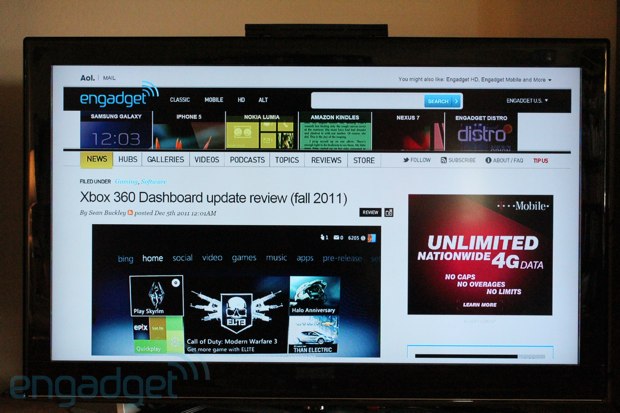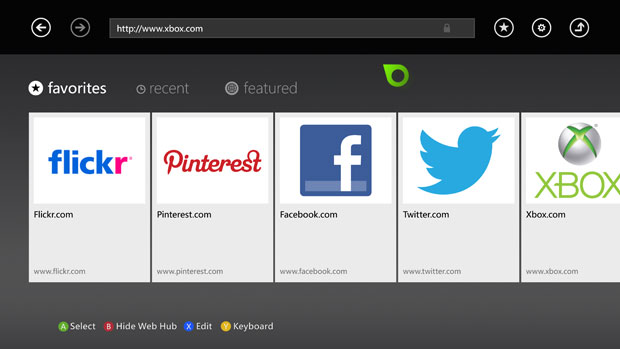Internet Explorer suddenly became one of the most widely available Internet TV browsers today as it starts rolling out to Xboxes. And early reports say its joystick-based interface is awful. Whatever. It’s v1. What matters is that Microsoft has united the world’s most popular motion sensor tech and one of the world’s most “popular” web browsers.
Wave hello to the future of the Internet.

Engadget’s Sean Buckley has a deep, hands on review of the Xbox’s build of Internet Explorer. A key flaw is that you have to use a free-floating, joystick-controlled cursor to type and click windows on screen. What would be better is the familiar “traditional locked-grid, hunt-and-peck” control, as Buckley calls it. That’s what we’re used to for console game keyboards and menu navigation.
You know what might be even better than that, and is well within reach? Motion navigation through Kinect — 20 million of which have been sold. It’s not available yet on Xbox’s Internet Explorer, but I bet it’s in the works. You can use voice controls over Kinect to navigate the “Web Hub” of recently visited and favorite sites. but motion navigation could be huge.
Imagine just waving or pointing at buttons to click them, swiping between photos, or pulling open a navigation menu. Depending on how accurate it gets, typing a few characters through Kinect’s motion sensor might not be so bad either. I’ve seen some impressive motion tech like this built on Kinect by Oblong Industries, who created the motion-controlled screens in the film Minority Report.

Kinect is one area where Microsoft seems firmly ahead of its competition. Niether Google nor Apple, both very interested in the Internet-connected TV market, have a popular motion sensing television input. With all the users, Kinect is getting data that’s surely making it better.
A truly laid-back, couch-ready web browsing experience is going to need motion detection. One day I imagine we’ll use our second-screens / phones for complex television controls, and everything else we’ll do with our bodies. Even if its not ready yet, and it starts out awkward, IE’s deployment to Kinect-equipped Xboxes means Microsoft is stumbling in the right direction.
[Image Credit: ripten]
